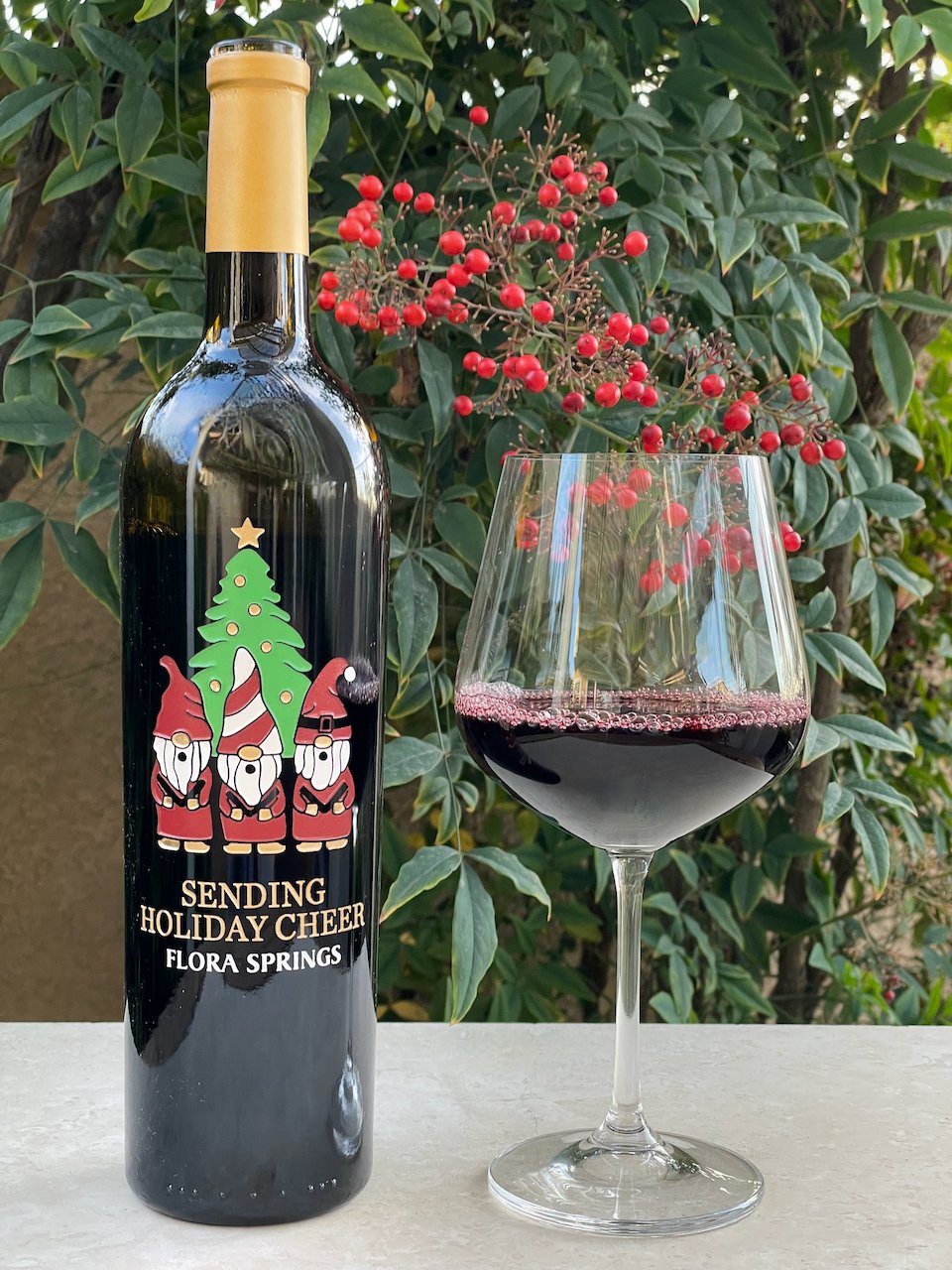2019 Flora Springs Napa Valley Red Blend ($95)
This is one of Flora Springs’ most popular holiday designs yet, their “Gnome Carolers,” spreading holiday cheer all around. The design is inspired by General Manager Nat Komes’ memory of his grandmother Flora, who loved to carol during the holidays. They are also offering special bottles with “Two Turtle Doves,” “Quail Greetings,” and “Happy New Year.”
Each bottle is meticulously etched and painted by hand, with capsules and back labels applied one-by-one. Each bottle is absolute perfection inside and out.
While these holiday bottles from Flora Springs are very beautiful, the wines are also exceptional. The 2019 Napa Valley Holiday Red Bordeaux Blend consists primarily of Cabernet Sauvignon, combining fruit from two outstanding, sustainably-farmed vineyard sources: the Komes Vineyard in Rutherford and Crossroads Vineyard in Oakville. It was aged 18 months in French (70%) and American (30%) oak barrels. And, with just 230 case produced, this is indeed a rare treat!
This Flora Springs Red Blend is deep ruby in color with beautiful aromas of black fruit, tobacco leaf and cedar. On the palate, this full-bodied wine has rich dark fruit flavors, wonderfully soft tannin, balanced acidity and a smooth finish that just keep on going. It’s so good you only need to pair it with a nice wine glass!
This exceptional Flora Springs 2019 Napa Valley Holiday Red Bordeaux Blend is a real treat for the holidays as this week’s Behind the Cork™ Wine of the Week. Cheers!
Disclosure of Wine Sample Submission: I received this sample at no cost for review. The opinions expressed are entirely my own.
Media Sample Provided by Flora Springs Winery







